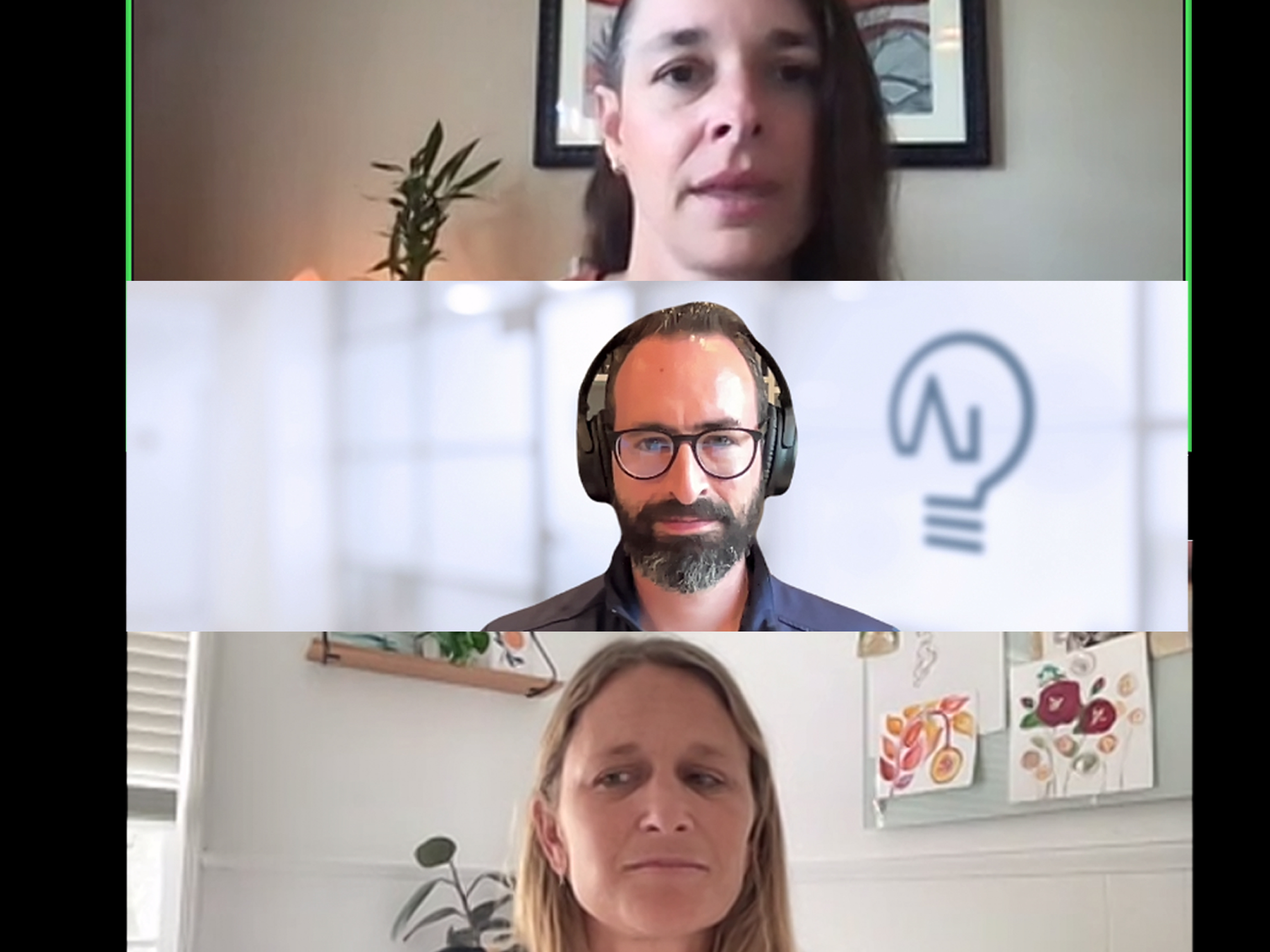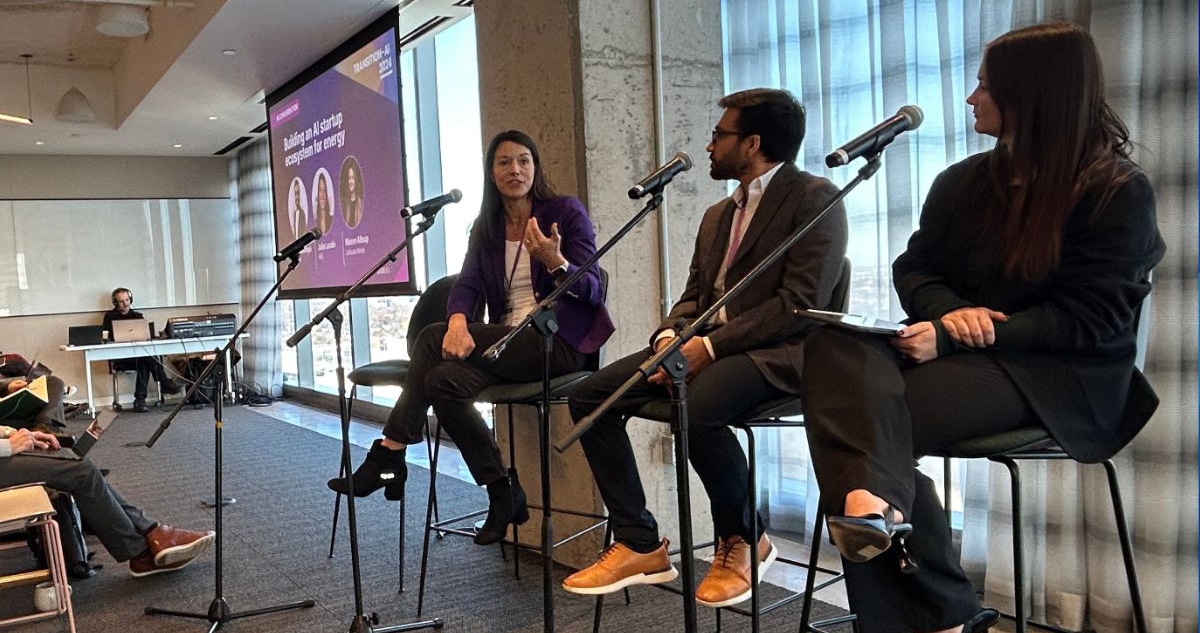
There’s no question, it’s a tricky market for founders looking to fundraise right now. It’s evident in the headlines and it was the unanimous consensus of the presenters at a recent talk on fundraising. That said, everyone agreed there is plenty of money available for entrepreneurs—it’s just harder to get it right now.
An event sponsored by AI Link, the community by AI Fund for entrepreneurs to build great companies together, participants heard remarks from Andrew Ng, managing general partner at AI Fund and repeat founder, followed by a panel discussion between Warren Packard, operating partner at AI Fund and 2x founder, and Kian Katanforoosh, CEO and co-founder of Workera.
Here are some of the highlights from Ng’s remarks and the panelists’ conversation with some salient lessons for founders today:
AI Fund: What does the market look like right now for entrepreneurs looking for financing?
 Andrew Ng: This fundraising environment is as bad as I’ve seen it for the last several years. Since the economic downturn, a lot of investors have pulled back and there is a sentiment of, ‘what else will go wrong?’ permeating venture capital.
Andrew Ng: This fundraising environment is as bad as I’ve seen it for the last several years. Since the economic downturn, a lot of investors have pulled back and there is a sentiment of, ‘what else will go wrong?’ permeating venture capital.
There isn’t as much capital available as before and investments are much more conservative. Having said that, compelling businesses are still getting funded and at very healthy valuations. Your ability to stand out and create a compelling case for your business, makes a material difference today. I still see a lot of exciting businesses getting funded.
 Warren Packard: Things are quite different today than they were six months ago. And just to provide a little bit of my background, I started investing back in 1997. The market was quite good in ‘97, then it blew up in 2000/2001, they started getting good again, and blew up in 2008. We’ve had an amazing market here, that just in April fell over again. So this is the third downturn that I’ve been through.
Warren Packard: Things are quite different today than they were six months ago. And just to provide a little bit of my background, I started investing back in 1997. The market was quite good in ‘97, then it blew up in 2000/2001, they started getting good again, and blew up in 2008. We’ve had an amazing market here, that just in April fell over again. So this is the third downturn that I’ve been through.
The reason that the market went down this time is very different from the previous two times, but the reaction of the investors looks to be about the same. Firms are investing more slowly and they have less fear of missing out on the next great deal. Valuations are down, round sizes are down, and raising new funds for the investors themselves are going to be down. But at the same time, the funds that are around now have commitments to their limited partners. That means there’s money to be deployed.
And so you need to know that balance, that because money isn’t getting depleted from venture funds and needs to be invested, you still really have a good shot of raising that money. But you should be aware that it’s going to take a bit longer.
AI Fund: How are investors changing their strategies?
 Kian Katanforoosh: The fundraising environment has definitely changed a lot today compared to what it looked like a year ago. A lot of VCs have redefined their strategies and used this season of pause to decide if they’re going to go earlier stage or go later stage. For example, I’ve seen VCs that have historically invested in earlier stages go slightly later stage for more secure investments.
Kian Katanforoosh: The fundraising environment has definitely changed a lot today compared to what it looked like a year ago. A lot of VCs have redefined their strategies and used this season of pause to decide if they’re going to go earlier stage or go later stage. For example, I’ve seen VCs that have historically invested in earlier stages go slightly later stage for more secure investments.
When fundraising for Workera, I used to think about three pillars: the team, the product, and the markets. Certain VCs are known to be more focused on the team or on the product, or more balanced. But as this market downturn came and also our company matured in terms of product, business metrics have taken over. I get very different questions nowadays than I used to get early on in the life of Workera.
 Warren Packard: While investors are going to be more patient now, they are still going to be actively meeting with companies. They need to find those great gems that are out there. As an entrepreneur, you want to make yourself turn out to be that gem. If you can convince the venture capitalists that you’re the diamond in the rough, you’re gonna get money. So while things have changed, they stay the same.
Warren Packard: While investors are going to be more patient now, they are still going to be actively meeting with companies. They need to find those great gems that are out there. As an entrepreneur, you want to make yourself turn out to be that gem. If you can convince the venture capitalists that you’re the diamond in the rough, you’re gonna get money. So while things have changed, they stay the same.
AI Fund: What kind of things are investors looking for now?
 Kian Katanforoosh: Everything is especially focused on ROI. There are lots of questions about the value you provide to customers, especially if you’re not in a recession-proof industry. VCs will ask questions about customers cutting their budgets or if customers are telling you they will not renew or expand their contracts, especially in enterprise SaaS. If you are able to retain or grow clients, be sure to mention that in your pitch and stress that your product has some defensibility against budget cuts.
Kian Katanforoosh: Everything is especially focused on ROI. There are lots of questions about the value you provide to customers, especially if you’re not in a recession-proof industry. VCs will ask questions about customers cutting their budgets or if customers are telling you they will not renew or expand their contracts, especially in enterprise SaaS. If you are able to retain or grow clients, be sure to mention that in your pitch and stress that your product has some defensibility against budget cuts.
AI Fund: Fundraising involves so many different parties. What can an entrepreneur do to make sure everyone ends up happy and feeling like they have a good deal?
 Warren Packard: You’re absolutely right, that as every stage of the company presents the opportunity to bring in new stakeholders. All of those stakeholders are initially aligned, but over time, they can fall out of alignment. That’s inevitable. But to navigate that, communication is number one to manage expectations across investors, employees, your board, customers, and so on.
Warren Packard: You’re absolutely right, that as every stage of the company presents the opportunity to bring in new stakeholders. All of those stakeholders are initially aligned, but over time, they can fall out of alignment. That’s inevitable. But to navigate that, communication is number one to manage expectations across investors, employees, your board, customers, and so on.
In a time like this when when you’re going out for a round of financing when valuations were crazy in the past, have a conversation with your investors so they understand upfront, what you’re looking for and are yours and their expectations balanced. If everybody has realistic expectations, you can get these rounds done, even if the valuation is going to come down.
And so that’s important just to kind of talk things through and figure out how things are going to work out. If there are founders who have departed or investors who have departed, that’s where things can get a bit dicey—where down rounds and wash outs can take place.
 Kian Katanforoosh: Fundraising is a journey from ranges to a single number. And what is that journey? It starts with asking your current investors things like, “What do you think in terms of valuation? Check size? What’s the right dilution we can take on?” and they will give you ranges to work with.
Kian Katanforoosh: Fundraising is a journey from ranges to a single number. And what is that journey? It starts with asking your current investors things like, “What do you think in terms of valuation? Check size? What’s the right dilution we can take on?” and they will give you ranges to work with.
As you get deeper into fundraising, you can ask your investors things like, “Would you be willing to do your pro rata—or do even more or less?” When they indicate their appetites, you can go to new investors knowing your existing investors will take a certain percentage of the round. And this is very useful information for an incoming investor, because they may have their own range and ownership requirements in mind. At the end, you’ll end up in a place that sort of optimizes for everyone’s ownership requirements and check size needs.
This is mostly communication, but beyond communication, there’s timing. Your board members are likely extremely busy people, so you’ll want to let them know that there is a week or two coming in the next few months where you will need them to be more hands-on than usual. The board will need to meet often during the fundraising process, so give that notice ahead of time.
What’s the current climate for companies that are pre-revenue and seeking a seed round?
 Warren Packard: I think the current environment unfairly impacts the companies that are further down the road. When you haven’t demonstrated anything yet but you can communicate an aspirational vision, investors will go at that even during a downturn.
Warren Packard: I think the current environment unfairly impacts the companies that are further down the road. When you haven’t demonstrated anything yet but you can communicate an aspirational vision, investors will go at that even during a downturn.
There’s really no bad time to start a company. It’s hard to do under all circumstances. But, so many good companies are started during downturns.
Downturns do unfairly penalize good companies that might be in Series B and just don’t have the velocity that investors are looking for and investors end up waiting on the sidelines instead. But I think things are good for the pre-product, pre-sales companies, pre-seed companies who are going out for financing.
Related Insights

When Everyone on Your Team Can Code: A Glimpse Into the AI-Powered Future

3 Pillars of Storytelling for Startups

AI Fund closes oversubscribed $190 million Fund II to co-found AI startups

AI Fund & Mitsubishi Corporation Join Forces to Drive AI Innovation

How to create an AI energy startup in under six months

